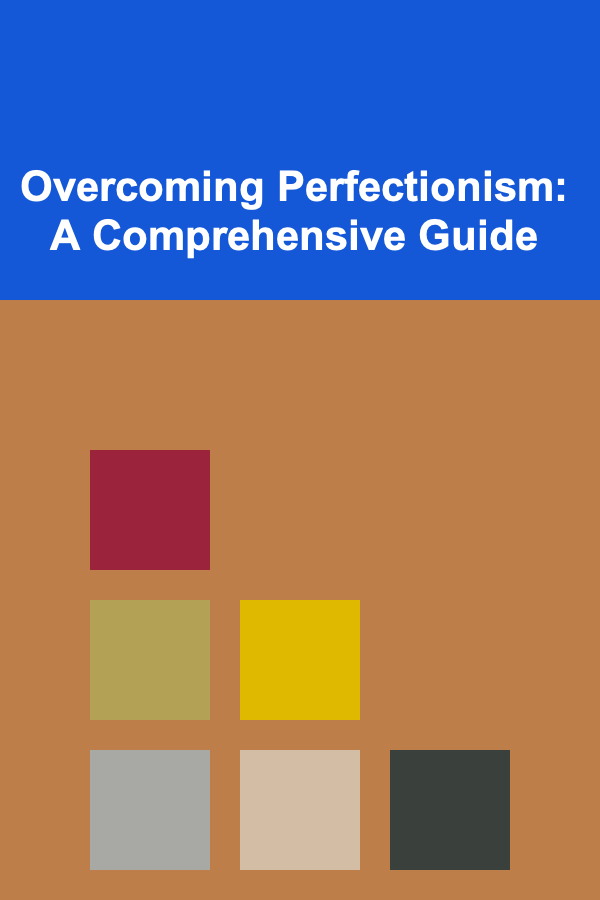
How to Draw Manga and Anime Characters
ebook include PDF & Audio bundle (Micro Guide)
$12.99$10.99
Limited Time Offer! Order within the next:

Drawing manga and anime characters is an exciting journey that involves both creativity and technique. For many artists, it's a path to expressing their artistic vision and storytelling abilities, capturing emotions, personalities, and intricate details through simple yet evocative designs. Manga and anime have a unique style that has gained immense global popularity, influencing art, fashion, and culture. However, creating captivating manga and anime characters requires practice, patience, and understanding of several essential drawing techniques.
In this article, we will explore the process of drawing manga and anime characters from the basics of proportions and anatomy to adding detailed facial expressions, body poses, clothing, and more. Whether you're a beginner or an experienced artist, this guide will help you understand the foundations and intricacies of drawing manga and anime characters.
Understanding Manga and Anime Art Style
Manga and anime art are often characterized by exaggerated features such as large, expressive eyes, simplified facial structures, and unique character designs. The style, though initially created in Japan, has since become a global phenomenon, with its influence extending far beyond the Japanese borders. While the basics of manga and anime character design are similar, there are slight differences in the way these characters are drawn for different mediums.
- Manga: Typically refers to Japanese comic books or graphic novels. Manga is black-and-white art and follows a more detailed, intricate drawing style, often with a focus on line work, shading, and the use of screentones (patterns for shading). Manga pages are also traditionally arranged from right to left, which is a characteristic feature of the format.
- Anime: Refers to Japanese animated television series or films. Anime characters may have slightly more simplified designs compared to manga counterparts due to animation constraints. However, the designs are still visually striking, with an emphasis on fluid motion, dynamic poses, and the use of colors to convey emotion.
Though both manga and anime are stylized, there is a lot of room for creative expression within these genres, and artists often incorporate their own personal touches.
Step 1: Start with Basic Shapes
Before diving into the details of a character's design, it's important to start with the foundational shapes. These will serve as the skeleton or framework for your character and guide the proportions of the body, head, and other features. Here's how to break down the basic structure:
1.1. The Head
The head is the most important part of your manga and anime character. In these art styles, the face is often highly expressive, with a focus on the eyes, mouth, and eyebrows. To draw the head, start with a simple oval or circle shape.
- Guidelines: Draw a vertical line down the center of the circle to help position the facial features symmetrically. Draw a horizontal line across the middle to mark where the eyes will go. This is the general guideline used for most manga characters.
1.2. The Body
For the body, start with a stick figure or basic geometric shapes (like rectangles or circles) to map out the character's posture and overall proportions.
- Proportions: Manga characters are often depicted in varying proportions, depending on the style and personality you want to convey. A typical adult character might be drawn using an 8-head height ratio, meaning the body is approximately 8 times the height of the head. However, for younger or chibi characters, the head may be larger compared to the body (around 4-5 heads tall).
- Pose: When sketching the body, decide on the pose or action. This will help you establish the dynamic flow of the character's form. Characters in manga and anime are often depicted in highly dynamic and exaggerated poses to emphasize movement and emotion.
1.3. Limbs
The limbs are drawn by adding simple lines for arms and legs, and the hands and feet are shaped after the basic framework. The arms can be divided into segments (upper arm, forearm) using basic shapes like rectangles, while the legs can be broken down into similar parts (thigh, calf).
- Action Lines: When drawing arms and legs, use "action lines" or guidelines to indicate the movement or flow of the pose. These lines will help maintain a consistent and dynamic posture.
Step 2: Draw the Facial Features
The face is the most important part of any manga or anime character, and learning how to draw expressive facial features is essential to conveying emotion, personality, and story. Here are the key components to focus on when drawing the face:
2.1. Eyes
The eyes are the defining feature in manga and anime. They are drawn large and expressive to reflect the emotional state of the character. Manga eyes often convey a wide range of emotions, such as happiness, sadness, surprise, anger, or confusion.
- Shape: The shape of the eyes can vary depending on the character's personality and gender. For female characters, the eyes are often larger and rounder, while male characters may have more angular or smaller eyes.
- Iris and Pupil: The iris is usually large, with the pupil being a central part of the eye. In manga, pupils can be detailed or stylized, with highlights and reflections that give the eyes a shiny, lively look. The level of detail in the eyes will vary depending on the character's design, from highly detailed with multiple shades to simple lines or gradients.
- Eyelashes and Eyebrows: For female characters, long, delicate eyelashes are often drawn to accentuate the eyes. Male characters, on the other hand, may have more subtle or minimal lashes. Eyebrows should also reflect the emotional state, being more arched or furrowed for intense emotions, or relaxed for calm expressions.
2.2. Nose
The nose in manga and anime is often simplified, with just a small line, dot, or triangle to represent it. Unlike realistic art, the nose is not usually the focus in manga art, as attention is given to the eyes and mouth.
- Position: The nose is typically positioned about halfway between the eyes and the chin. In some styles, the nose may be less detailed, with just a small line or hint of shadowing under the eyes.
2.3. Mouth
The mouth plays a significant role in expressing emotions. In manga, the mouth can be depicted as a simple line or more detailed with curves and shading.
- Shape and Size: The shape of the mouth can indicate the character's mood---an upward curve for a smile, a downward curve for a frown, or a wide open mouth for shouting or surprise. In more stylized art, the mouth can be very exaggerated or even simplistic, depending on the character's personality.
- Lines and Expression: Manga characters' expressions often involve subtle changes in the shape of the mouth to reflect different emotional states. For example, a nervous character might have a small, wavy line for the mouth, while an angry character might have a sharp, angular line.
2.4. Hair
Hair is another major defining characteristic of manga and anime characters. The style, length, and color of the hair can tell you a lot about the character's personality, status, or role in the story.
- Shape and Flow: Start by drawing the outline of the hair and then add individual strands or locks to make it look more natural. Manga and anime hair is often stylized with exaggerated shapes and volume. Some characters may have spiky, unkempt hair, while others may have long, flowing locks.
- Detailing: Once the basic outline is done, add details like highlights, shading, and texture. Use curved or jagged lines to represent the hair's volume and movement.
Step 3: Add Clothing and Accessories
Clothing in manga and anime is often designed with as much creativity and detail as the characters themselves. Whether your character is wearing a school uniform, armor, or futuristic attire, clothing can tell a lot about their personality, profession, and the world they inhabit.
3.1. Clothing Fit and Style
When drawing clothing, keep in mind the character's personality, age, and setting. For example, a schoolgirl character might wear a uniform with pleats and a bow, while a warrior might wear heavy armor with intricate designs.
- Folds and Creases: To make clothing look more realistic, add folds and creases that follow the contours of the body. These folds should be drawn along the natural lines where the fabric bends, like around the elbows or waist.
3.2. Accessories
Accessories such as jewelry, hats, belts, and weapons add depth and individuality to the character. The accessories should match the character's personality and role in the story. For example, a mysterious character may have a cloak, while a high-energy character might wear wristbands or a headband.
Step 4: Shading and Final Touches
Once the drawing is complete, adding shading can give your manga or anime character more depth and dimension.
4.1. Basic Shading Techniques
- Cross-Hatching: Use cross-hatching to create shadows and texture. This technique involves drawing multiple layers of parallel lines that intersect to create areas of dark shading.
- Blending: For softer shadows, you can blend graphite using a blending stump or your finger to smooth out the lines and create a more natural gradient effect.
4.2. Final Touches
Add any final details, such as background elements, sparkles in the eyes, or additional textures to the clothing. This is the time to refine your drawing and ensure all elements are balanced and visually appealing.
Conclusion
Drawing manga and anime characters requires an understanding of both the technical aspects of drawing and the unique artistic style that defines this genre. By mastering the basics of shapes, proportions, and anatomy, along with honing your skills in facial features, clothing design, and shading, you can create compelling and expressive characters. Remember, the key to success in manga and anime art is practice, so keep experimenting with different styles, techniques, and poses to develop your own unique artistic voice.
Whether you're drawing for personal enjoyment, creating fan art, or aspiring to become a professional manga artist, the possibilities are endless in this dynamic and ever-evolving art form.

Effective Strategies for IT Support Specialists: Mastering Technical Support and Customer Service
Read More
Empowering Teams: Effective Communication and Collaboration Techniques for Product Owners
Read More
How to Identify and Seal Sound Leaks in Your Home
Read More
How to Store Kitchen Appliances Without Overcrowding
Read More
How to Use Dropshipping Techniques to Make Money
Read More
Overcoming Perfectionism: A Comprehensive Guide
Read MoreOther Products

Effective Strategies for IT Support Specialists: Mastering Technical Support and Customer Service
Read More
Empowering Teams: Effective Communication and Collaboration Techniques for Product Owners
Read More
How to Identify and Seal Sound Leaks in Your Home
Read More
How to Store Kitchen Appliances Without Overcrowding
Read More
How to Use Dropshipping Techniques to Make Money
Read More